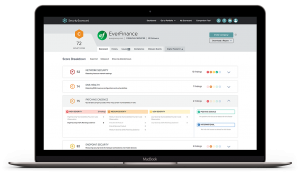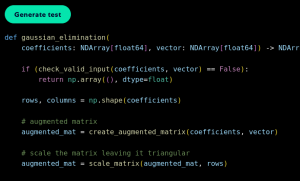Mobile Backend-as-a-Service (MBaaS) All Hype or Here to Stay?
![]() There seems to be an almost constant stream of innovation related to cloud computing and mobile technology. Some are little more than vendors’ and analysts’ conjecture, while others quickly demonstrate their staying power with rapid industry adoption, growing numbers of vendors and influxes of capital. It is unclear if mobile backend-as-a-service (MBaaS / Mobile BaaS) will be a success story or just a buzzword that everyone forgets before the next hype cycle begins.
There seems to be an almost constant stream of innovation related to cloud computing and mobile technology. Some are little more than vendors’ and analysts’ conjecture, while others quickly demonstrate their staying power with rapid industry adoption, growing numbers of vendors and influxes of capital. It is unclear if mobile backend-as-a-service (MBaaS / Mobile BaaS) will be a success story or just a buzzword that everyone forgets before the next hype cycle begins.
What Is Mobile Backend as a Service?
Mobile backend-as-a-service (MBaaS / Mobile BaaS), as the name suggests, refers to solutions that provide pre-built, cloud hosted components for developing mobile application backends. These platforms reduce the time and complexity required to build mobile applications and allow developers to focus on core features instead of low-level tasks like virtual machine configuration or developing common functionality like user authentication or notifications that are necessary with infrastructure-a- a-service (IaaS) and platform-as-a-service (PaaS) offerings. MBaaS platforms are also unique from mobile enterprise application platforms (MEAPs) like Sybase’s Unified Platform and IBM Worklight, which tend to be traditional multi-layer software stacks that include backend components, middleware and client components instead of a cloud-based service.
Source: Appcelerator/IDC
According to Forrester ,MBaaS offerings typically include:
- Cloud-based storage for mobile data
- Ability to automatic generate REST-based interfaces to read and write data
- Internet optimized data access
- User/security management tools
- Usage analytics
In addition, many vendors also include features like single sign on or support for specialized integrations with devices or enterprise software packages.
The MBaaS Market and Players
MBaaS has a buzz worthy name, but it may be more than just marketing fluff. More and more market watchers and participants believe MBaaS addresses a real need – one that will exist as long as developers build mobile apps. Recent research from MarketsandMarkets projects MBaaS the market will expand from $216.5 million in 2012 to $7.7 billion in 2017. The report also discusses the factors that are spurring the expansion of MBaaS:
“The factors driving the overall market include increase in adoption of smart phones, tablets, demand for fast time to develop and deploy, ability to address security and performance needs and challenges in vendor selection.”
These factors driving MBaaS growth are almost identical to reasons cited for leveraging PaaS. This has caused many, including me, to question the need to classify MBaaS as a unique sector separate from the larger, more established PaaS market. According to Miko Matsumura, Senior Vice President Developer Relations, Kii Corporation, there is some validity to observation.
Matsumura said,
“If you’re only a “developer tool” style MBaaS you will definitely be consolidated by platform (PaaS) players as has always been the case historically. ‘Picks and shovels’ do really well during a gold rush, but as the market stabilizes, tools players need to either become platforms or merge with platform players.”
He further explained that he strongly believes there is a long-term place for MBaaS. However, for platforms to survive, they must have unique capabilities like monetization (a key feature in the Kii Corporation’s platform, which was recently released to public beta) that add obvious value for mobile developers.
Kinvey CEO Sravish Sridhar’s view supports Matsumura’s assessment. Sridhar said,
“The top Backend as a Service providers are the ones solving the hard backend problems for developers. Scale across clouds, security of data in the backend and on the apps, managing users across identity spaces and flexibility to run custom business logic for your apps anywhere. It’s not just about being the data backend anymore. To succeed in Backend as a Service, you have to provide a full-feature backend solution.”
MBaaS is still evolving. The market is still rapidly evolving, but couple dozen vendors have already entered the market and venture capital is flowing freely. Many vendors are still in beta and focus on common use cases like storing data, social and notifications. Vendors include:
| Name | Notes | Key Services |
| Apigee UserGrid | Allows developers to quickly build scalable backend APIs | monetization, usage analytics, social graph, news feeds, notification, geo-location, user management |
| Applicasa | Mobile game management platform that allows users to create a backend without knowledge of server languages | in-app purchases, promotion management, usage analytics, geo-location, data management |
| StackMob | Hosts HTML5, API creation, usage analytics, social media, push notifications | |
| Appcelerator | Allows developers to create native, hybrid and mobile web applications using a JavaScript-based APIProvides a marketplace for modules that provide additional functionality created with the Appcelerator API | Push notifications, geo location, photos, social integrations and sharing, user management, usage analytics |
| FeedHenry | Allows developers to build Node.js apps in HTML5, JavaScript, CSS or hybrid applications with PhoneGap using the company’s online IDE or command line | Accelerometer, Audio, Cache, Camera, Contacts, Local Storage, Cloud Data Storage, RSS, File, Events, Geo IP, Geolocation, Logging, Mapping, Messaging, Push Notifications, Social |
| Sencha.io | Data management, user authentication, messaging | |
| Kinvey | One of the oldest MBaaS offerings | Data integration, push notifications, client libraries, business logic, data integration, usage analytics, content delivery network for large files, user management, geo location and points of interest, security |
| Parse | Data management, push notification, social media | |
| CloudMine | Usage analytics, user authentication, data (file) synchronization | |
| iKnode | Supports C# development within a web browser to create mobile services | Notifications, password management, user management, email, social media |
| Api O Mat
|
Social and chat, messaging, email | |
| Buddy | cross-platform MBaaS | geo-location, photo albums, chat/messaging, image filters, user management, friends, usage analytics |
| GeoLoqi | Geofencing, geocoding, tracking, spatial data storage, usage analytics | |
| Flurry | cloud storage, user account management, push notifications, cloud data storage | |
| Kii | Recently launched its public beta | User management, data management, analytics, monetization |
| mobDB | Provides a web interface for backend service that allows developers to view and edit data in real time | Push notifications, usage analytics |
| Proxomo | Social, data management, geo location and points of interest, events, notifications, user authentication | |
| QuickBlox | Geo location, chat, social media, content management, data management, messaging, ratings/voting | |
| ScottyApp | Focuses on developers creating mobile web appsProvides a web-based editor to define and configure mobile backends | Social media, user authentication |
| Urban Airship | Push Notifications, Rich Media Messaging, In-App Purchase and Subscriptions | |
| Kumulos | Allows users to design data structures (and APIs) with a point and click interface | Data management, usage analytics, user authentication |
| Tiggzi | Data and file management, user management | |
| Windows Azure Mobile Services | Recently updated platform with iOS, social, messaging and email support | Data integration and management, user authentication, push notifications, messaging, email, social |
The Bottom Line for MBaaS
The MBaaS market is still very new and is arguably just a category or specialization of the existing PaaS space. The high level of mobile adoption makes it almost certain that MBaaS is here to stay. However, technology leaders should be prepared for the MBaaS market and platforms to undergo enormous changes in the next couple of years.
Currently there are no standards for native and hybrid mobile development. Platforms like Apache Cordova attempt to fill the gap by acting as “middleware” to translate code between devices. If open standards emerge for the application tier across mobile platforms, MBaaS will become less attractive. Unfortunately, it’s extremely unlikely that mobile, applications standards will ever become a reality since software and the app ecosystem are key differentiators across mobile platforms.
Since standards are unlikely to cool the MBaaS market, vendors and new products and services will continue to flood the market until the big boys decide the MBaaS space is worthy of their interest. Then, the consolidation and rapid maturation of the MBaaS sector will begin. Some startup will burn out due to the normal factors – poor product, management or competitive position. A large segment of MBaaS solutions that remain will become acquisition targets for larger players like Oracle, IBM or mobile enterprise management vendors.
In addition to being prepared for large shifts in the market, IT leaders should understand their risk and tolerance for vendor or platform lock-in. Deeply integrating with proprietary MBaaS may accelerate development when building applications, but they will slow migrations to new platforms to a crawl. Organizations can avoid this fate by isolating or abstracting interactions with MBaaS frameworks.
A message from John Furrier, co-founder of SiliconANGLE:
Your vote of support is important to us and it helps us keep the content FREE.
One click below supports our mission to provide free, deep, and relevant content.
Join our community on YouTube
Join the community that includes more than 15,000 #CubeAlumni experts, including Amazon.com CEO Andy Jassy, Dell Technologies founder and CEO Michael Dell, Intel CEO Pat Gelsinger, and many more luminaries and experts.
THANK YOU









